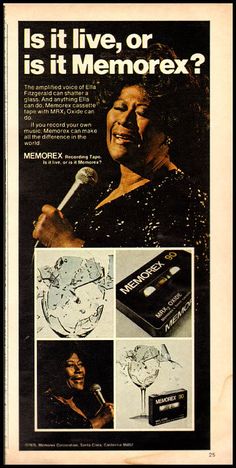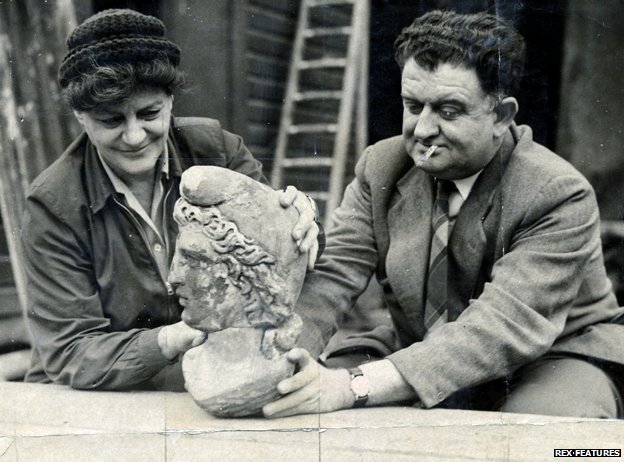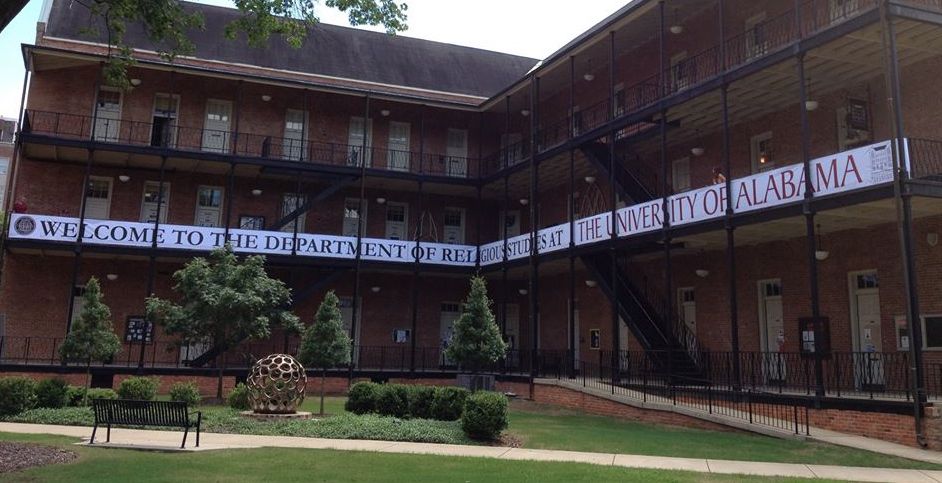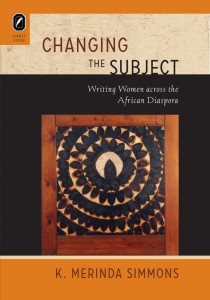 As I’m sure we’ve all heard by now, Kim Kardashian’s backside, displayed for the world’s consumption and viewing pleasure (or not) on the front cover of Paper Magazine, “broke the Internet” just a short while ago and has since caused a flurry of debate, shock, praise, and disbelief. Add to that a big-booty praise of “#allday” from her beloved husband, Kanye West which received thousands of Retweets. I’ll leave it for those entering into the debate with interests and intentions of conflict management and moral maintenance to weigh in on what Kim’s big ‘ole butt plastered on the Internet for the world to view and deconstruct means for progress, freedom, justice, feminism, America, motherhood, identity politics, women, sexuality, Kanye, blackness, and much, much more. Amazing how a bare ass on a magazine can speak to and says something about such a *****wide***** variety of topics!
As I’m sure we’ve all heard by now, Kim Kardashian’s backside, displayed for the world’s consumption and viewing pleasure (or not) on the front cover of Paper Magazine, “broke the Internet” just a short while ago and has since caused a flurry of debate, shock, praise, and disbelief. Add to that a big-booty praise of “#allday” from her beloved husband, Kanye West which received thousands of Retweets. I’ll leave it for those entering into the debate with interests and intentions of conflict management and moral maintenance to weigh in on what Kim’s big ‘ole butt plastered on the Internet for the world to view and deconstruct means for progress, freedom, justice, feminism, America, motherhood, identity politics, women, sexuality, Kanye, blackness, and much, much more. Amazing how a bare ass on a magazine can speak to and says something about such a *****wide***** variety of topics!
Something more interesting — and fascinating (in my opinion) has caught my attention about the unfolding conversation and ensuing public debate and discourse — that has seemingly little to do with the perceived “object” of study here. I’m more curious about how all of these emerging grand claims to truth (seen in what follows below) sparked by Kim K’s naked badonkadonk are helping it to break the Internet and make possible the Sui Generis booty she (and the world) thinks is so NOT-unique, or, not unique enough to warrant all of the hype. One is not born a big booty, rather, one becomes a big booty, so it seems. We have manufactured the Kardashian booty that we so love to hate and hate to love. Continue reading “Manufacturing Booty: On How We Stake Our Claims”
#falsechoice
 On Twitter earlier today it occurred to me that the old commercial advertizing Memorex brand cassette tapes (did I just date myself?) is an apt way to get at the problem of people who try to distinguish between, on the one hand, representation — an activity acknowledged to be lodged within the problems of discourse — and actual or authentic lived experience, on the other. Continue reading “#falsechoice”
On Twitter earlier today it occurred to me that the old commercial advertizing Memorex brand cassette tapes (did I just date myself?) is an apt way to get at the problem of people who try to distinguish between, on the one hand, representation — an activity acknowledged to be lodged within the problems of discourse — and actual or authentic lived experience, on the other. Continue reading “#falsechoice”
Just Really Old… Or Historical?

BBC News ran a feature this morning entitled “Temple of Mithras: How do you put London’s Roman shrine back together?” about a sixty-year-old excavation of a Roman temple, the remains of which were found when an insurance firm was being built on the site where the third-century shrine once stood. In the span of a couple of weeks back in 1954, a whopping 400,000 people lined up to see the ruins before they were moved and placed on display. Continue reading “Just Really Old… Or Historical?”
An Agonistic Affair
 If identification is an agonistic affair — in which social actors continually define and redefine Self and Other while wrestling over competing interests, ranks, and domains — then negotiating what counts as a legitimate place for a date (especially when one party forgot it was Valentines Day and failed to make a reservation somewhere nice) might be as good a place as any other to try to see what’s going on when we try to ascribe an identity.
If identification is an agonistic affair — in which social actors continually define and redefine Self and Other while wrestling over competing interests, ranks, and domains — then negotiating what counts as a legitimate place for a date (especially when one party forgot it was Valentines Day and failed to make a reservation somewhere nice) might be as good a place as any other to try to see what’s going on when we try to ascribe an identity.
Restoring the Restorations
 Restorations of monuments to their original form are not only a difficult task—as any archeologist or art restorer will certainly confirm you of—but also a point of dispute. Consider for example the following sign about the restorations of the temple of Athena Nike (pictured above) that caught my attention when I last visited the Acropolis last year. Continue reading “Restoring the Restorations”
Restorations of monuments to their original form are not only a difficult task—as any archeologist or art restorer will certainly confirm you of—but also a point of dispute. Consider for example the following sign about the restorations of the temple of Athena Nike (pictured above) that caught my attention when I last visited the Acropolis last year. Continue reading “Restoring the Restorations”
Not That There’s Anything Wrong with That…
 NPR ran a story the other day based on a Daily Beast article about the disappointing reality that a lot of popular craft whiskeys that cater to the discerning consumer with an appreciation for the finer things are actually not produced in artisanal small batches at all but instead hail from the large Midwest Grain Products (MGP) factory in Indiana. How to tell you’re getting the “real thing”…? Check whether the product is “distilled by” or “bottled/produced by” the company—a big difference when looking for the origins of the whiskey you’re consuming. Continue reading “Not That There’s Anything Wrong with That…”
NPR ran a story the other day based on a Daily Beast article about the disappointing reality that a lot of popular craft whiskeys that cater to the discerning consumer with an appreciation for the finer things are actually not produced in artisanal small batches at all but instead hail from the large Midwest Grain Products (MGP) factory in Indiana. How to tell you’re getting the “real thing”…? Check whether the product is “distilled by” or “bottled/produced by” the company—a big difference when looking for the origins of the whiskey you’re consuming. Continue reading “Not That There’s Anything Wrong with That…”
“New Books on the Edge” with K. Merinda Simmons
“New Books on the Edge” is an ongoing blog series, which engages forthcoming manuscripts by Edge collective members.
Changing the Subject: Writing Women Across the African Diaspora
From diaspora to class, gender, subjectivity, migration, labor and much more – take us behind the scenes of Changing the Subject — how it came to be, what sorts of questions are raised in this project, and what data is being engaged?
My disciplinary training is in literary theory, and I have long been puzzled by a tendencyI see working in that domain of scholarship. Namely, while so much of the field has been influenced by what many—myself included—see as important poststructuralist intellectual moves, I nonetheless keep coming across analyses by prominent scholars that focus on “authenticity” in one manner or other. This seems an especially noticeable phenomenon within scholarship on texts deemed marginalized—and, as my data set when I began the work that would ultimately become this book was comprised of narratives by women of various African diasporas, I decided to delve into how and why the emphasis on something called authenticity appears in the criticism surrounding these texts. Continue reading ““New Books on the Edge” with K. Merinda Simmons”
I’m Just Here for the T-Shirt
 Photo credit: http://traduzioniclick.it
Photo credit: http://traduzioniclick.it
As I write this, I am returning from Germany, where I’ve had the pleasure of teaching a short course at the University of Hannover. When I wasn’t teaching this past week, I spent some time doing what most tourists do: wandering the city looking for trinkets to bring back to my family. When I asked my students where I should look for some gifts, most did the equivalent of rolling their eyes while telling me there was nowhere cool in Hannover to go (one student, in particular, humorously – and yet repeatedly – directed me to Berlin). But despite the fact that I was armed with a good map, a subway ticket, and directions to the shopping district, my task ended up much harder than I thought it would be. Continue reading “I’m Just Here for the T-Shirt”
Who Are You? I’m a Religious Studies Scholar

“Who Are You?” is an ongoing series that asks members of Culture on the Edge to reflect on one of their own many identities (whether national, gendered, racial, familial, etc.), theorizing at the same time the self-identification that they each chose to discuss.
The inevitable moment when people I meet for the first time ask what I do tends to be a bit of an awkward one. It goes something a little like this:
“So, what do you do, Merinda?”
“I’m a religious studies professor at the University of Alabama.”
“What sort of stuff do you work on?”
“I’m interested in how and why people make authenticity claims… I focus mostly on these claims in relation to gender, race, and the South.”
“…wait, but didn’t you say you’re in a religion department?”
“Yeah.”
“So that’s the kind of stuff you can study in a Ph.D. program in religion?”
“Well, sure! My Ph.D. is in English though.”
It’s at this point that most people change the subject. But for those who act interested in how it happens that someone with an English degree is doing her teaching and research in a religious studies context, I try to explain the following.… Continue reading “Who Are You? I’m a Religious Studies Scholar”
Business as Usual
 Today is Memorial Day in the U.S. — a federal holiday marking a time to remember the past sacrifices of members of the armed forces.
Today is Memorial Day in the U.S. — a federal holiday marking a time to remember the past sacrifices of members of the armed forces.
In many cases, of course, “sacrifice” is a euphemism for death.
But it’s also a day that marks blockbuster sales — “half-off tops and shorts!” Continue reading “Business as Usual”

